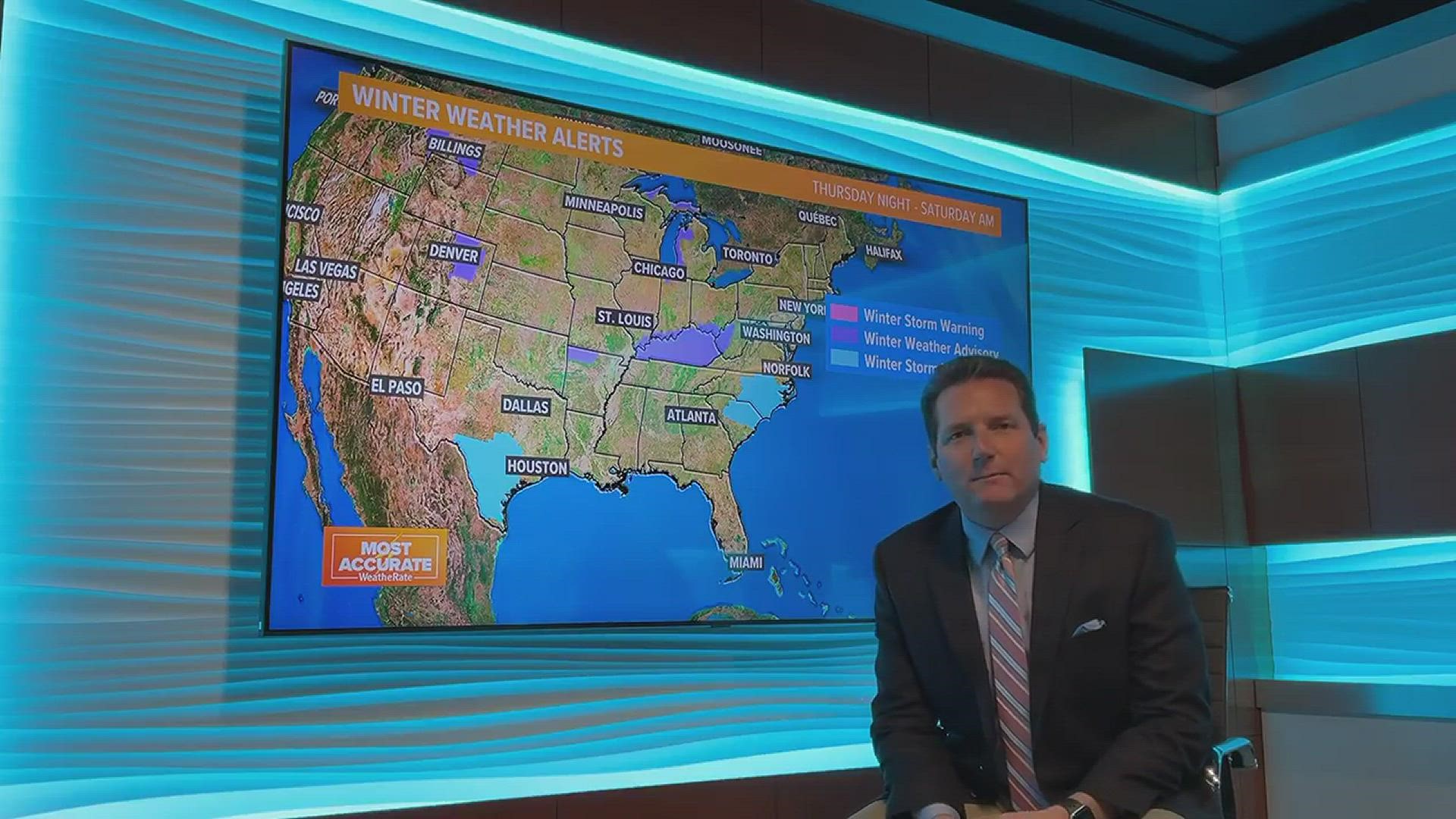NORFOLK, Va. — Author's note: The video above is a forecast breakdown for the snowstorm coming to Hampton Roads around Jan. 21.
Southeastern Virginia and Northeastern North Carolina are predicted to get the year's first blanket of snow on Friday.
With the winter weather coming, it's important to keep a few things in mind when it comes to your vehicle.
AAA shared a few things you can do before a snowstorm to make sure your car is prepared for the weather, and ways to make sure driving is as safe as possible.
Caring for your car
Whether you have places to go, or you're staying inside with a cup of hot cocoa during a winter storm, these steps will help you protect your car from sustaining wear and tear from snow and freezing temperatures.
- Oil: Make sure your oil is up to date. You don't have to change it specifically for a snowstorm, but you don't want to be going into a snowstorm with oil past its recommended use date. (Some oil is specifically rated for cold weather.)
- Headlights: Replace burned-out headlights and have hazy plastic lenses swapped for clear ones.
- Engine: Make sure your car isn't showing any "check engine lights." Have a mechanic check your exhaust system for leaks.
- Tires: Check to make sure your tires were rotated within the last 5,000-7,500 miles, and make sure your tire pressure is up to your vehicle's specifications.
- Battery: Old batteries tend to fail in very cold weather. If your car battery is 3-5 years old, have a mechanic test its condition.
- Coolant: Make sure your coolant is fresh and filled.
- Heater: Make sure your defroster is working, so you can clear your windshield.
- Windshield: Replace any torn windshield wipers, preferably with rubber-clad ones, and put in a winter solution of washer fluid.
Driving in the snow
Of course, it's always safer to stay home if roads in your area are snowy or icy. If you can avoid accidents by staying home, you'll not only do yourself a favor, you'll be helping emergency teams out, too.
However, if you absolutely can't avoid a drive, AAA gave this advice for making sure your trip is safe.
- Timing: Leave early, and keep an eye on traffic reports.
- Speed: Go slower than you think you need to, and when you come to a hill, maintain your speed rather than accelerating upwards. Don't use cruise control on snow or ice.
- Following distance: Try to put an 8-10 second driving distance between you and the car in front of you (more than double the usual distance).
- Skidding: Don't panic! If your car starts to skid out, avoid slamming the breaks, just keep your eyes and wheels pointed in the direction you want to go.
- Braking: Braking isn't as sure of an option to avoid crashes when you're driving on snow. Try to steer away from possible collisions, if you can. Don't brake and turn the wheel at the same time.
- If you're stuck: Stay in your car. That will keep you dry, and help rescue teams find you. It's helpful to have extra gloves, coats and hats on hand.
You can also check out this list of things to have in your vehicle if you're taking a longer trip on a snowy day. (This was put together earlier in January after many people got stuck on I-95 in Fredericksburg for more than 20 hours due to snowy, icy conditions and car crashes.)

